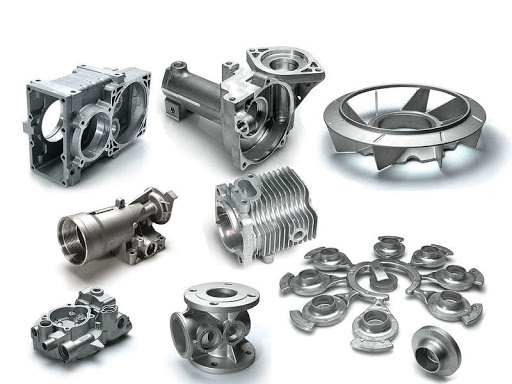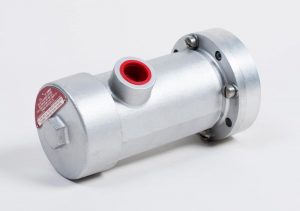Discover the advantages of using Aluminum Castings for your next project
Exploring the Versatile Utilizes and Applications of Aluminum Castings in Modern Industries
Aluminum castings have become integral to various modern sectors because of their special residential properties. They use considerable benefits in weight decrease, thermal conductivity, and deterioration resistance. From automotive innovations to applications in durable goods and building and construction, their convenience is impressive. The true level of their impact expands beyond immediate advantages, hinting at wider ramifications for sustainability and efficiency. What exists ahead for aluminum spreadings in an ever-evolving industrial landscape?
Automotive Market Innovations
The vehicle industry has actually progressively embraced light weight aluminum castings to boost automobile performance and efficiency. By using aluminum, suppliers can create lighter components, which add to improved gas economic climate and reduced discharges. Key applications consist of engine blocks, transmission cases, and structural parts, where the product's strength-to-weight ratio provides toughness without adding excess weight.
Light weight aluminum castings also use superior thermal conductivity, which assists in better warm dissipation, therefore boosting engine performance. Advancements in casting modern technologies, such as die spreading and sand spreading, enable the manufacturing of intricate geometries, allowing for innovative styles that maximize space and functionality.
The recyclability of light weight aluminum straightens with sustainability objectives in the automotive industry, advertising eco-friendly practices. As the industry remains to introduce, the usage of aluminum castings is likely to expand, driving further developments in lorry layout and efficiency.
Aerospace Applications and Developments
While the aerospace market remains to focus on weight reduction and fuel effectiveness, aluminum castings have become an essential material selection for different applications. Their lightweight nature, combined with high strength-to-weight ratios, enables significant enhancements in aircraft performance and efficiency. Aluminum spreadings are generally made use of in architectural elements, such as fuselage frames and wing parts, where reducing weight is essential.
Recent advancements in light weight aluminum spreading technologies, consisting of enhanced alloy formulas and precision spreading techniques, have actually additionally enhanced the product's performance capacities. These advancements enable the manufacturing of complex geometries and detailed layouts while preserving structural integrity. In addition, aluminum's superb rust resistance warranties durability and integrity in extreme aerospace settings.
As the aerospace field significantly embraces sustainability, light weight aluminum castings provide a recyclable service that lines up with eco-friendly methods, making them a pivotal component in the advancement of next-generation airplane.
Durable Goods and Everyday Products
As customers progressively seek light-weight yet long lasting materials for everyday items, light weight aluminum spreadings have actually gotten popularity in various consumer items. The unique residential properties of aluminum, including its resistance to rust and superb thermal conductivity, make it a perfect option for things like cookware, home appliances, and outside equipment. Aluminum cast pots and pans supply even warmth distribution, boosting cooking performance. In addition, making use of light weight aluminum in items such as bike structures and luggage guarantees a balance between stamina and transportability. Makers value light weight aluminum castings for their versatility, as they can be conveniently built right into intricate forms while preserving structural integrity. Furthermore, the capability to recycle aluminum without degrading its homes lines up with growing consumer choices for sustainable items. Generally, aluminum spreadings are indispensable to the manufacturing of long lasting, functional, and visually pleasing durable goods, satisfying the demands of modern-day way of livings.
Building And Construction and Architectural Uses
Light weight aluminum castings have become a vital element in building and building layout, especially because of their strength and light-weight nature. These residential properties make aluminum an ideal selection for different applications, including structural components, facades, and attractive functions - Aluminum Castings. Builders and designers increasingly use light weight aluminum castings for window structures, doors, and roof covering systems, improving both capability and looks. The product's resistance to corrosion additionally extends its life-span, reducing maintenance prices and ensuring toughness in diverse environmental conditions
Aluminum can be quickly formed right into detailed designs, allowing for ingenious building expressions. Its adaptability facilitates the development of custom-made items that fulfill specific design requirements, from elaborate barriers to complicated assistances. As sustainability comes to be a top priority, light weight aluminum's recyclability includes in its charm in environment-friendly building and construction techniques. Overall, light weight aluminum spreadings are changing the building and construction industry by providing lightweight, durable, and aesthetically enticing remedies.
Electric and Digital Parts
Aluminum castings play an important role in the manufacturing of light-weight electric enclosures, which enhance portability and efficiency in various applications. Additionally, their superb thermal conductivity makes them perfect for warm sinks, making certain peak efficiency and longevity of electronic parts. Additionally, light weight aluminum's conductive residential properties add to its usage in different electric conductors, stressing its significance in contemporary technology.
Lightweight Electrical Units
Lightweight electric rooms play an essential function in safeguarding delicate digital elements from ecological variables and physical damage. Constructed from light weight aluminum spreadings, these rooms are valued for their strength-to-weight proportion, making them perfect for various applications across markets. Their lightweight nature help in lowering total system weight, which is essential in portable and mobile electronics. In addition, light weight aluminum's corrosion resistance improves durability, extending the life expectancy of the enclosed parts. The capacity to mold light weight aluminum right into complicated forms enables customized styles, dealing with particular demands while making certain effective warm dissipation. Furthermore, these enclosures can be easily integrated right into existing systems, providing flexibility and versatility in contemporary technological environments. On the whole, light-weight aluminum units significantly add to the effectiveness of electronic gadgets.
Heat Sinks and Conductors
While many materials are utilized in digital parts, aluminum spreadings stick out for their efficiency in warmth monitoring as heat sinks and conductors. Their exceptional thermal conductivity enables efficient heat dissipation, which is crucial in stopping the overheating of electronic gadgets. Light weight aluminum's lightweight nature better improves its viability for applications where weight is a considerable variable, such as in aerospace and automobile markets. Furthermore, aluminum spreadings can be easily built right into complex shapes, supplying layout versatility for optimizing thermal efficiency. The deterioration resistance of aluminum additionally contributes to the durability and integrity of these components in various settings. As modern technology developments and devices come to be much more small, the need for reliable heat administration options, like light weight aluminum spreadings, proceeds to grow.
Marine Industry Utilization
The marine industry progressively depends on light weight aluminum castings for their remarkable durability and corrosion resistance. These residential or commercial properties make aluminum an excellent choice for various applications, including boat hulls, engine parts, and aquatic equipment. The light-weight nature of light weight aluminum castings enables improved gas effectiveness and less complicated maneuverability in boat, which is vital for both leisure and commercial vessels.

Light weight aluminum spreadings likewise provide considerable cost benefits as a result of their long life expectancy and low maintenance needs, minimizing the general functional expenses for marine operators. In addition, the adaptability of light weight aluminum enables complex layouts that can satisfy details performance needs.
Suppliers in the marine sector utilize sophisticated spreading techniques to create complex shapes, making sure that components satisfy rigorous safety and efficiency requirements. As the need for high-performance marine vessels expands, light weight aluminum castings are positioned as a vital product in enhancing the performance and longevity of aquatic tools.
Sustainability and Recycling in Aluminum Casting

Aluminum Recycling Process
Recycling aluminum plays an important duty in lessening ecological effect and saving resources within the spreading sector. The aluminum reusing process starts with the collection of scrap light weight aluminum, which can include old parts, manufacturing waste, and post-consumer products. This scrap is then arranged, cleaned, and shredded into tiny items to promote melting.
When prepared, the aluminum scrap is thawed in a heater at reduced temperatures than key light weight aluminum production, considerably reducing power consumption. The liquified aluminum is then cast into ingots or other shapes for reuse in numerous applications - Aluminum Castings. This closed-loop system allows for the efficient recovery of aluminum, preserving its residential properties while decreasing the demand for virgin products. As a result, the recycling process is a critical element of sustainable methods in light weight aluminum spreading
Environmental Advantages
While light weight aluminum spreading plays an essential function in numerous sectors, its environmental advantages are specifically impressive concerning sustainability and resource preservation. The lightweight nature of aluminum adds to energy performance in transport, reducing fuel intake and discharges. Additionally, light weight aluminum spreading facilitates using recycled materials, greatly reducing the power needed for production contrasted to key aluminum. This reusing process reduces waste and decreases the ecological impact associated with mining and refining resources. Aluminum is 100% recyclable without degradation of its properties, advertising a lasting lifecycle. By choosing light weight aluminum casting, sectors can considerably reduce their carbon footprint while promoting source efficiency, making it a necessary choice in the search of environmentally friendly production practices.
Closed-Loop Systems

Often Asked Concerns
What Are the Secret Benefits of Light Weight Aluminum Castings Over Other Products?
Aluminum castings provide lightweight buildings, outstanding rust resistance, and high strength-to-weight ratios. They can be conveniently built into complex shapes, offer excellent thermal and electric conductivity, and are economical, making them more effective over lots of different image source products.
Exactly how Is the Aluminum Casting Process Eco Pleasant?
The light weight aluminum spreading process is eco-friendly due to its recyclability, low power intake, and reduced waste manufacturing. Its capacity to make use of recycled materials reduces the carbon footprint, promoting sustainability within manufacturing practices.
What Are Typical Difficulties in Aluminum Spreading Production?
Usual obstacles in aluminum spreading production include preserving dimensional accuracy, taking care of thermal contraction, preventing issues like porosity and additions, making certain proper mold layout, and optimizing production effectiveness while decreasing product waste and environmental impact.
How Do Aluminum Castings Contrast in Cost With Other Manufacturing Approaches?
Aluminum castings typically use competitive prices compared to other manufacturing approaches, specifically for tool to high-volume production. Their reduced preliminary tooling expenditures and effective product use can lead to desirable business economics over time.
What Future Trends Are Expected in Aluminum Spreading Innovation?
Future fads in aluminum casting modern technology are prepared for to include innovations in automation, boosted alloy compositions, boosted recycling techniques, and the combination of 3D printing, all intended at boosting efficiency, minimizing expenses, and lessening environmental impact.
Recent developments in aluminum spreading innovations, including boosted alloy formulas and precision casting techniques, have actually even more boosted the product's efficiency capabilities. Aluminum castings have ended up being a crucial component in building and construction and building style, especially due to their strength and light-weight nature. The aluminum reusing process starts with the collection of scrap light weight aluminum, which can include old components, making waste, and post-consumer products. When prepared, the light weight aluminum scrap is melted in a heating system at reduced temperature levels than primary light weight aluminum production, considerably reducing energy usage. In addition, aluminum spreading assists in the use of recycled materials, significantly decreasing the you could try these out power required for manufacturing contrasted to key light weight aluminum.